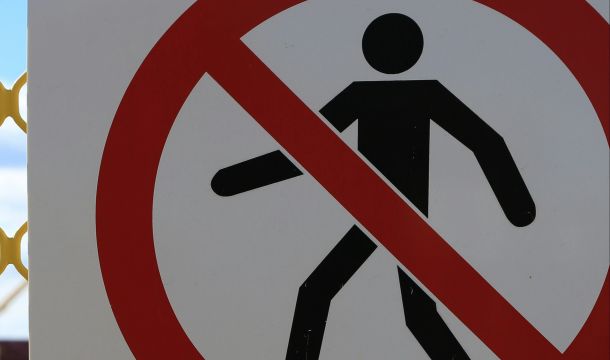DOL Issues Temporary Regulations to Implement Emergency and Paid Sick Leave Provisions
On April 1, 2020, the U.S. Department of Labor (DOL) issued a temporary rule to implement the Public Health and Emergency and Paid Leave Provisions. There are several areas in the regulations that had not previously been addressed in detail, including the type notice an employee must provide the employer, the documentation the employer may require the employee to provide as to the need for such leave, recordkeeping, and the determination of whether the employer meets the small employer exemption. The most important particulars of the regulations are summarized below:
1. Employees subject to the new family and medical leave and paid leave provisions may not take paid leave where the employer does not have work for the employee available.
2. Employees subject to a quarantine or isolation order that are able to telework, and therefore may not take paid sick leave if: (a) the employer has work for the employee to perform; (b) the employer permits the employee to perform the work from another location; and (c) there are no extenuating circumstances that prevent the employee from performing that work.
3. In determining whether an employee is unable to work because he has been advised by a healthcare provider to self-quarantine for a COVID-19 reason, the advice to self-quarantine must be based on the healthcare provider's belief that the employee has COVID-19, or may have COVID-19, or is particularly vulnerable to COVID-19, and the self-quarantine must prevent the employee from working.
4. An employee experiencing COVID-19 symptoms may take paid sick leave for time spent making, waiting for, or attending an appointment for a test for COVID-19, but the employee may not take paid sick leave to self-quarantine without seeking a medical diagnosis. An employee who is unable to telework may continue to take paid sick leave while awaiting a test result. In the case of an employee who exhibits COVID-19 symptoms and seeks medical advice but is told that he does not meet the criteria for testing and is advised to self-quarantine, he is eligible for leave provided he meets all the other requirements.
5. In the case of an employee who is unable to work because he needs to care for an individual who is subject to a quarantine or isolation order, or who has been advised by a healthcare provider to self-quarantine due to concerns related to COVID-19, the employee must have a genuine need to care for the individual. Such paid leave may not be taken to care for someone with whom the employee has no personal relationship. The individual being cared for must be an immediate family member, roommate, or similar person with whom the employee has a relationship that creates an expectation that the employee would care for the person.
6. In determining the need for leave, the normal rules apply in determining the employee's salary basis for purposes of exemption from overtime under the white-collar rules.
7. Any time taken by an eligible employee under the expanded family and medical leave (regarding caring for a child whose school or daycare is closed) counts toward the 12 work weeks of FMLA leave to which the employee is entitled. Thus, during this expanded family and medical leave, the employee may elect to use, or an employer may require an employee to use, accrued leave that under the employer's policies that would be available to the employee to care for a child, such as vacation or personal leave, or paid time off concurrently with the expanded family and medical leave. Because this period of expanded family and medical leave is not unpaid, the FMLA provision for substitution of the employee's accrued paid leave is inapplicable, and neither the eligible employee nor the employer may require the substitution of paid leave. However, employers and eligible employees may agree, where Federal or state law permits, to have the employer's paid leave policy supplement pay under the expanded family leave so that the employee receives the full amount of his or her normal pay. For example, an eligible employee and employer may agree to supplement the expanded family and medical leave by substituting one-third hour of accrued vacation leave for each hour of expanded family and medical leave. If the eligible employee and employer do not agree to supplement paid leave in the manner described above, the employee will remain entitled to all the paid leave which is earned or accrued under the terms of the Employer's plan for later use.
8. In determining the regular rate to the employee for paid leave, the employer must average the employee's regular rate over multiple work weeks, which DOL has determined as a six-month period or over the entire term of employment where less than six months.
9. In determining whether an employee is eligible for the expanded family and medical leave, if employee is laid off or otherwise terminated on or after March 1, 2020, he is nevertheless considered to have been employed for at least 30 calendar days, provided the employer rehires or otherwise re-employs the employee on or before December 31, 2020, and the employee has been on the employer's payroll for 30 or more of the 60 calendar days prior to the date the employee was laid off or otherwise terminated.
10. In determining whether an employer has 500 or more employees at the time leave is requested, the employer should include full-time and part-time employees, employees on leave, temporary employees who are jointly employed, and day laborers supplied by a temporary placement agency, but not independent contractors. Nor do employees count who have been laid off and have not subsequently been re-employed.
11. In determining whether the employer meets the small employer exemption, the employer may deny paid sick leave or expanded family and medical leave only to those otherwise eligible employees whose absence would cause the small employer's expenses and financial obligations to exceed available business revenue, poses a substantial risk, or prevents the small employer from operating at minimum capacity, respectively. Such a small employer must document the facts and circumstances that meet the criteria and justifies such denial, and retain such records in its own files.
12. Regarding intermittent leave, one basic condition is that all employees and their employer must agree on the use of intermittent leave under the recent legislation. If an employer directs or allows an employee to telework, subject to an agreement between the employer and employee, the employee may take paid sick leave or expanded family and medical leave intermittently, in any agreed increment of time, while the employee is teleworking. An employee normally may not take such intermittent leave at the employer's worksite, except that the employee and employer may agree to take paid sick leave or expanded family and medical leave intermittently solely to care for the employee's son or daughter whose school or place of care is closed, or whose childcare provider is unavailable, because of reasons related to COVID-19.
13. Regarding an employee's notice to the employer regarding the need to take leave, an employer may require employees to follow reasonable notice procedures as soon as practical after the first work day or portion of a work day for which an employee receives paid sick leave in order to continue to receive such leave. It is reasonable to require that employees provide oral notice and sufficient information for an employer to determine whether the requested leave is covered, but the employer may not require a notice to include documentation by what is allowed and discussed in the next paragraph. It is reasonable for the employer to require the employee to comply with the employer's usual notice procedures and requirements, absent unusual circumstances. If an employee fails to give proper notice, the employer should give him notice of the failure and an opportunity to provide the required documentation prior to denying the request for leave.
14. Regarding documentation of the need for a leave, such documentation must include a signed statement containing the following information: (a) the employee's name; (b) the date(s) for which leave is requested; (c) the COVID-19 qualifying reason for leave; and (d) a statement representing that the employee is unable to work or telework because of the COVID-19 qualifying reason. An employee must provide additional documentation depending on the COVID-19 qualifying reason for leave. For example, an employee might have to provide the name of the government entity that issued a quarantine or isolation order; the name of the healthcare provider that advised him to self-quarantine for COVID-19 reasons; the name of the child being cared for; the name of the school, place of care, or childcare provider that closed or became unavailable due to COVID-19 reasons; a statement representing that no other suitable person is available to care for the child during the period of requested leave; or the normal FMLA certification related to a serious health condition.
15. The new statute does not protect an employee from employment actions, such as lay-offs, that would have affected the employee regardless of whether the leave was taken. The employer must be able to demonstrate that the employee would have been laid off even if he had not taken leave.
16. Concerning record keeping, an employer is required to retain all documentation provided by the employee for four years, regardless of whether leave was granted or denied. Similarly, even if an employee provided oral statements, the employer is required to document and retain such information for four years. If an employer denied an employee's request for a leave pursuant to the small business exemption, the employer must document its authorized officer's determination that the prerequisite criteria for that exemption are satisfied and retain such documentation for four years. Also, there are documents the employer should create and retain to support its claim for tax credits.
17. In terms of enforcement, enforcement action is similar to the FMLA except that an employee can only bring an action against an employer if the employer has 50 or more employees working in the current or preceding calendar year. Enforcement is otherwise initiated by the DOL.
Related Content
Get Email Updates
Recent Content

TPS Update (as of 9/3/2025)

DOL To Shut Down OFCCP and Transfer Duties to EEOC

Meaning of Supreme Court Ruling Limiting Nationwide Injunctions in Birthright Case

In Spite of Adminstration Changes, Monitoring of the Workplace Continues to Create Legal Issues

The Importance of Corporate Culture
